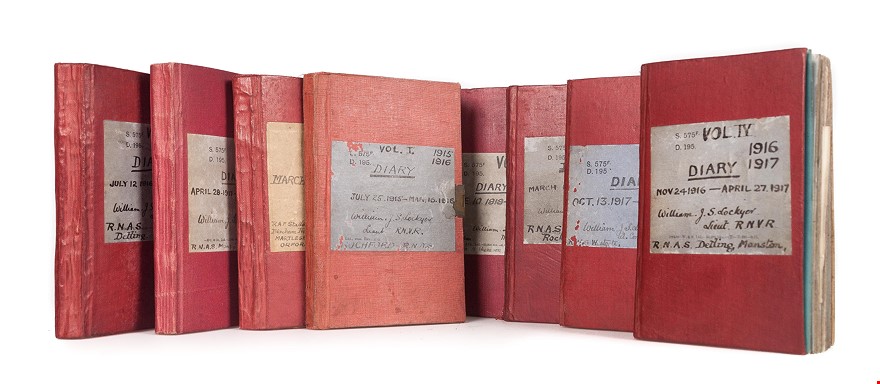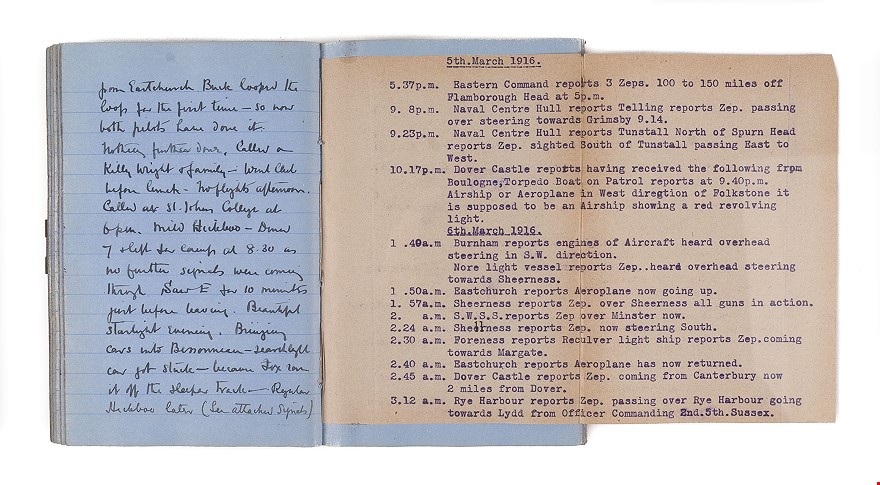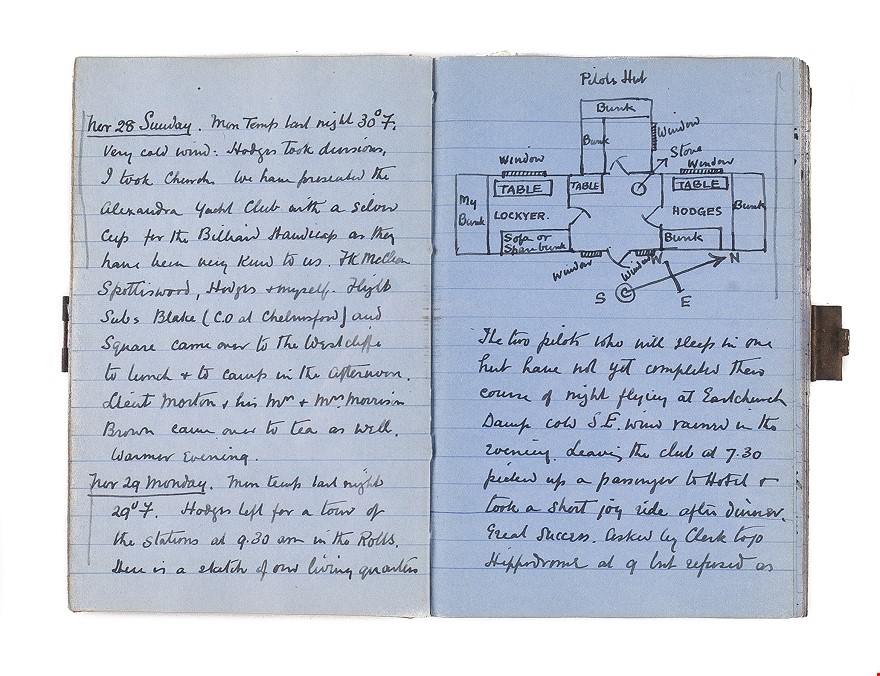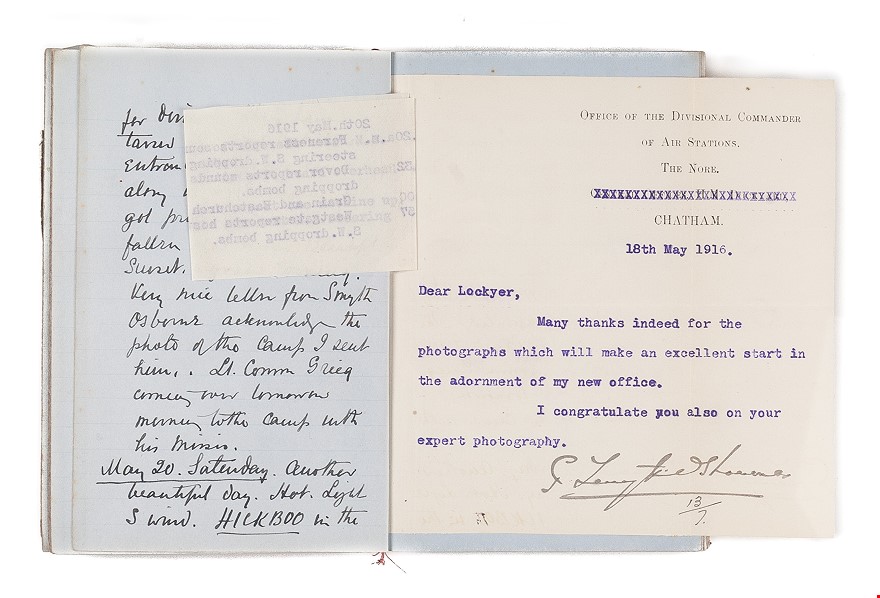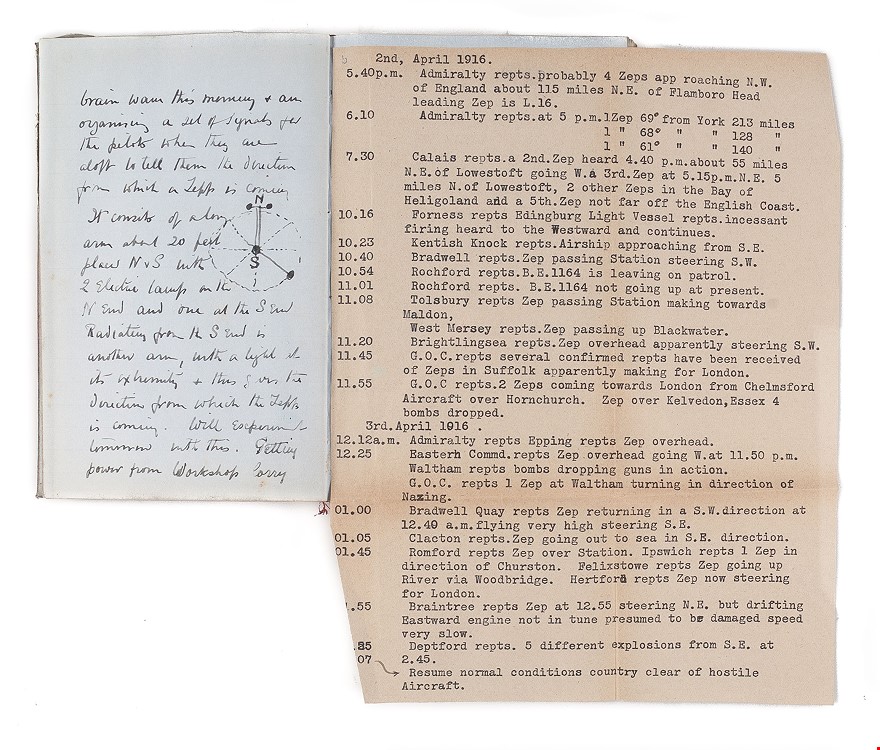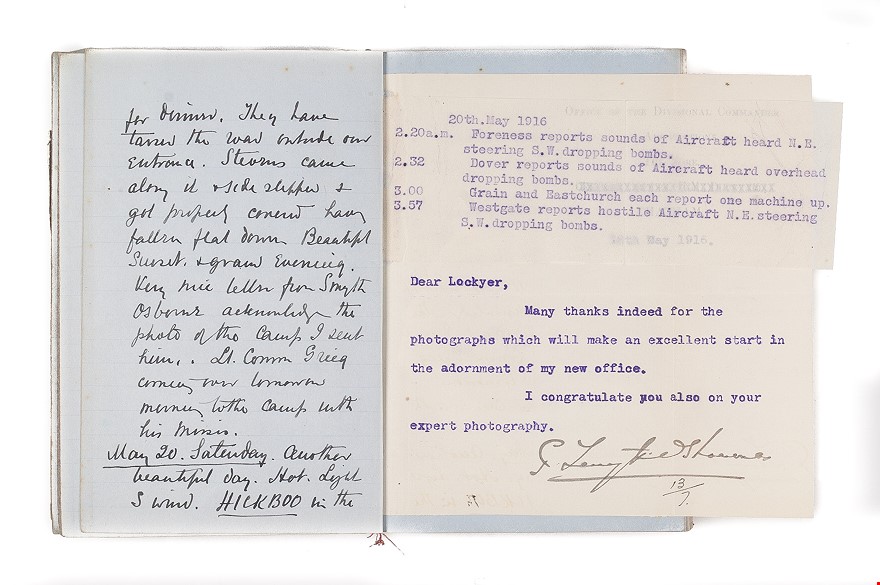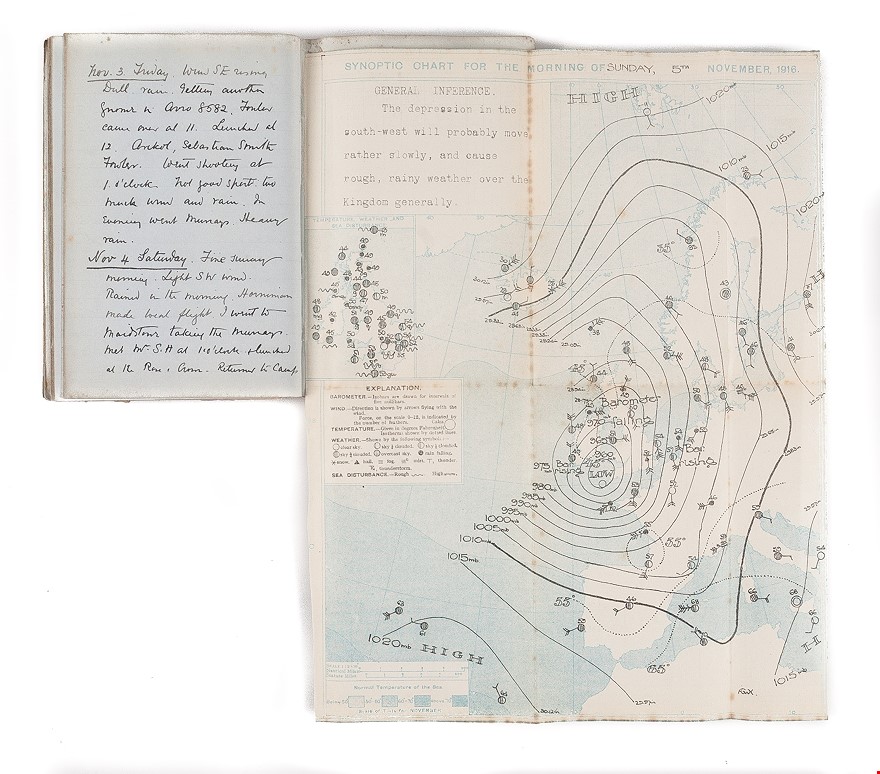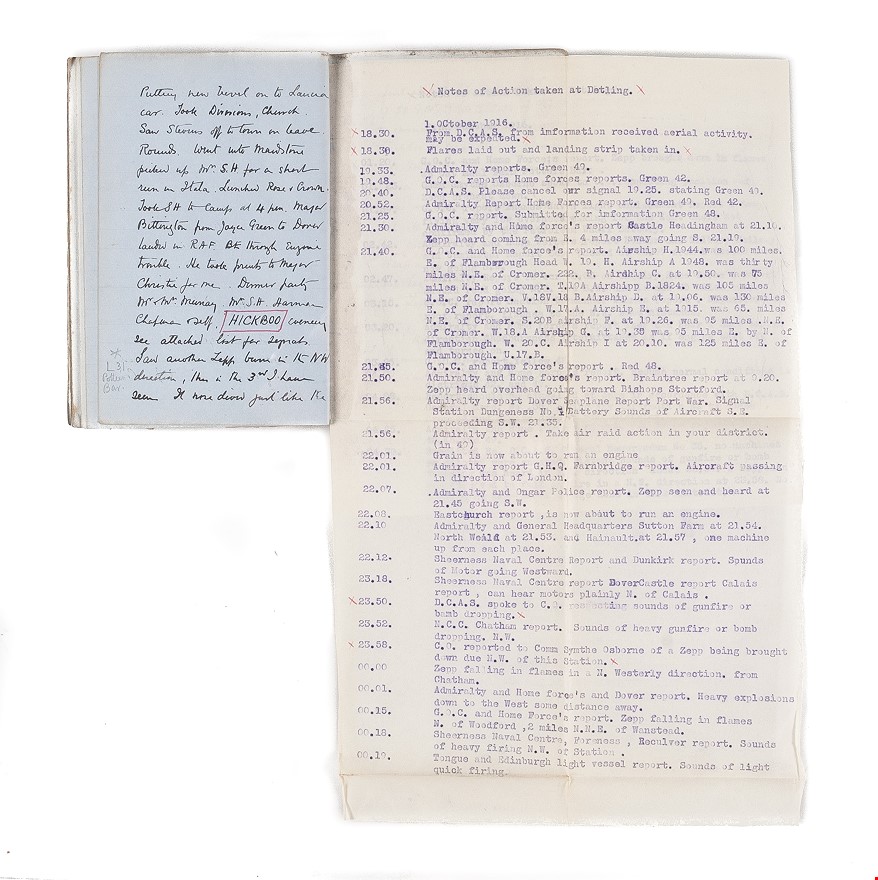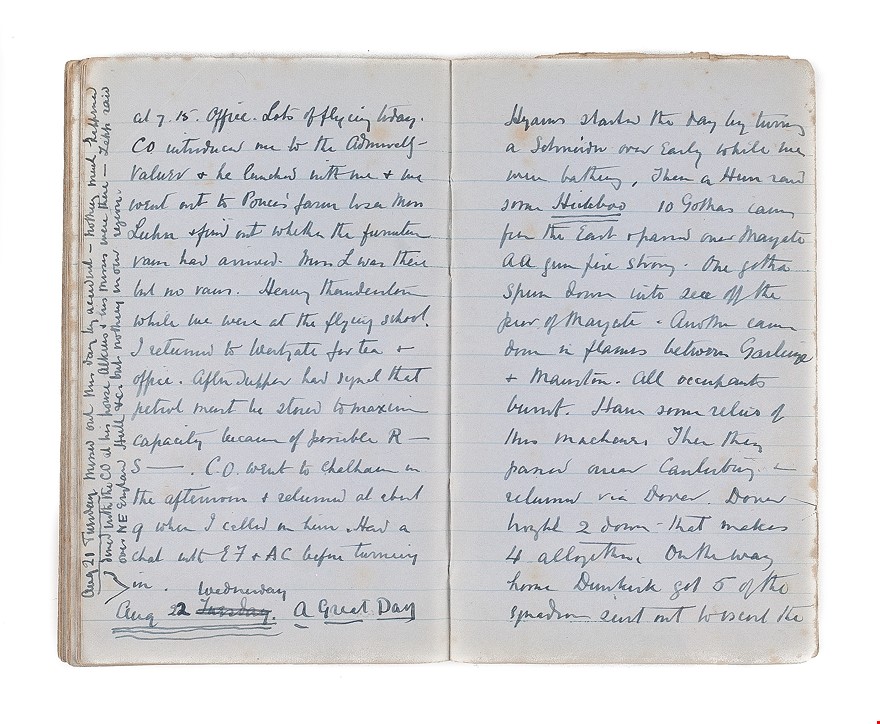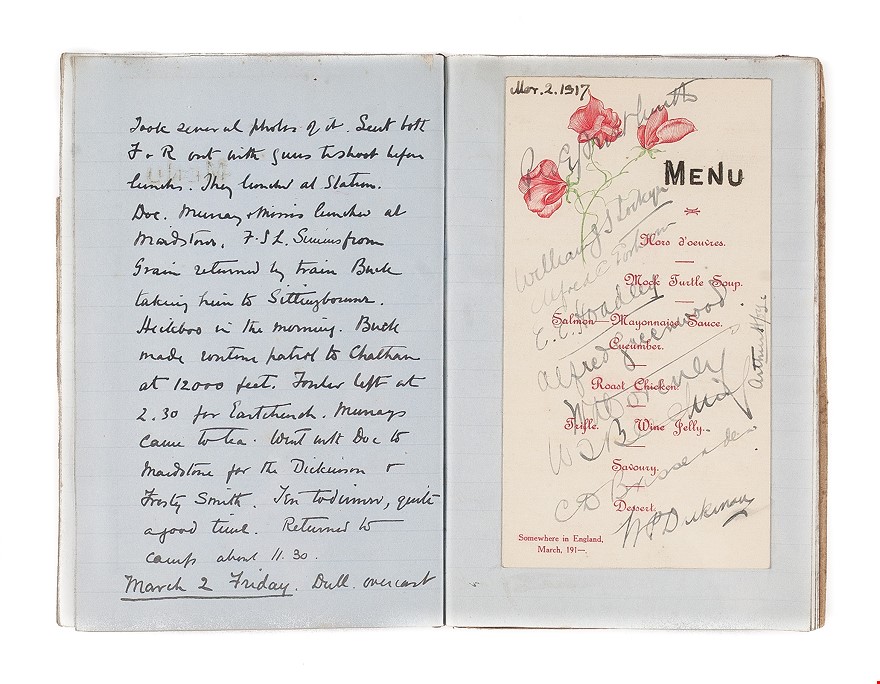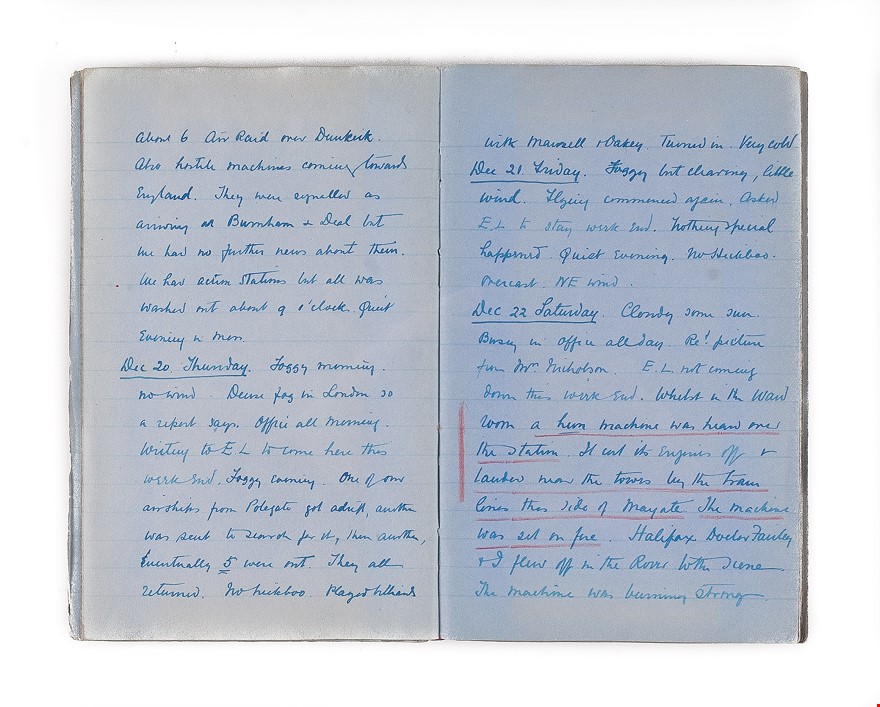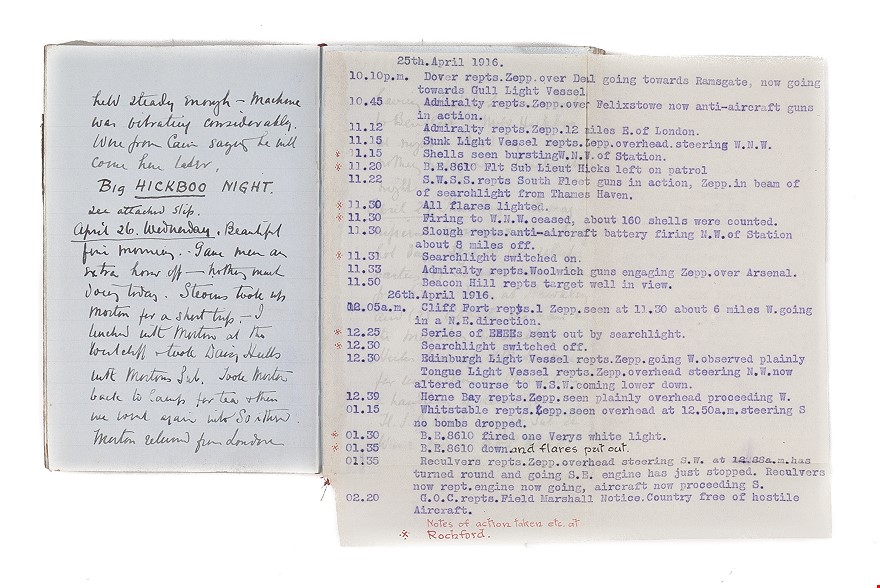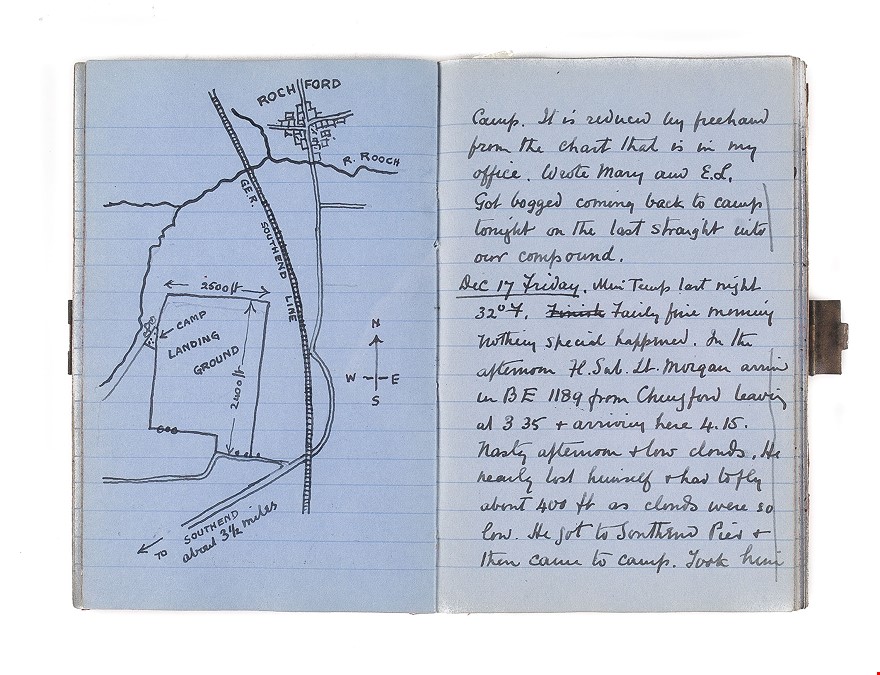Manuscript diaries, July 1915 - March 1919. R.N.V.R. & R.A.F.
LOCKYER William J.S. (1919.)
£3500.00
Please contact us in advance if you would like to view this book at our Curzon Street shop.
8 vols. Manuscript in ink and pencil, in a clear and legible hand. Occasional ms. plans and drawings, copious tipped in typescript & carbon copy signal reports, lists of ratings, printed synoptic and meteorological charts as well as playbills, newspaper clippings, menus and other ephemera. Army issue red cloth bound 16mo notebooks, 60 by 11mm, each with a blue paper label titled in ink. Occasional offsetting and slightly bumped, light wear to labels, otherwise very good condition. [c.1280]pp. R.N.A.S. Rochford, Detling, Manston, Westgate, Bercham Newton, July 1915 - September
An extensive and comprehensive record from the heart of Britain's nascent air service. Kept by an accomplished meteorologist and invaluable coordinator, these meticulous daily logs not only chart William J. S. Lockyer's personal progression from Lieutenant in the Royal Naval Volunteer Reserve to Major in the Royal Air Force, but they also give a detailed insight into the development and full lifespan of Royal Navy Air Service before it was consolidated into the Royal Air Force in 1918. Distinctly separated from the Royal Flying Corps (the army air faction) in 1915, the R.N.A.S. focussed predominantly on supporting naval operations in terms of reconnaissance on land and sea, as well as defence particularly against enemy Zeppelin attacks.
Although not a pilot himself, Lockyer begins his service as a key coordinator for the R.N.A.S. camps at Rochford and Detling. His meteorological training is put to good use, and much of the early volumes are concerned with the logging of Zeppelin raids in consolidated reports, many examples of which are here tipped in in carbon copy. They comprise information gathered from observation and listening posts along the British coastline. These reports show military technology at a fascinating moment of transition - by the outbreak of war in 1914 both sides had sufficiently developed aeronautic programs to be engaging in aerial warfare, but as radar was still decades away, the means of detection were still entirely reliant upon human sensory observation. These observances were then telegrammed or telephoned from posts to bases, and the information was gathered into reports and used to direct search-lamps and launch aerial counter attacks. Throughout his journals, Lockyer refers to these raids with their naval slang name of "HICKBOO"s - an almost nightly occurrence. (For a brief spell, confusingly, he also has a cat by this name.)
Considerable pride was clearly taken in the maintenance of these logs, and Lockyer intersperses the early records with neatly drafted plans of his camps and the surrounding areas. He also shows a flair for engineering, frequently bemoaning and repairing the Italia and Lancia automobiles at the camp, as well as devising and detailing with diagrams both inventions for the drying of wellington boots, and means of signalling airborne aircraft from the ground through the use of flares and mirrors. He often made observational trips with the pilots, and is in many instances used these occasions to take aerial photographs with his camera, which he developed himself and remarks upon the quality of.
Although very much at the front line of the home front, as it were, Lockyer's enthusiasm is at times infectious and can play down the gravity and importance of the nighttime observations being performed at these bases. Upon a visit to R.N.A.F. Eastchurch on June 15 1916 he remarks "Eastchurch as a station is unrecognisable!! Buildings Galore - [...] Fowler took me over his shops + also to the hangar where the two Hadley Pages + the 225 Short are. They are enormous machines - + made me thing of H.G. Wells' books. I went in the fuselage of the latest H.P. - I returned to Detling in 40 mins - some time for me." He also intersperses stories of visiting flying aces performing loop the loops and high jinx of emergency landing in farmers' fields, with more grave instances that better tell the very real dangers, both physical and mental, risked by these early Naval aviators. For example, Oct 24 1916 "Sad news about Hardstaff's fatal accident at Eastchurch + also about Sq. Com. Mavic's serious accident", and Feb 3 1916 "H. Sub. Lt. Morgan is suffering from nerves after his Zepp fight & Dr Bridges spoke over the phone to me about him. He has got 2 weeks sick leave to recuperate." In one notable incident on August 22 1917 the bucolic idyll of cricket matches and swimming in the sea is jarringly interrupted by the shooting down of two German Gothas in the immediate vicinity of the camp. The day on which the incident takes place is superscripted with "A Great Day", but the entry on the following day brings home the reality of the occurrence: "I was sent off by Ross to find out what effects were found in the bodies of the 3 Germans that came down in the burnt planes. I went to the farm and saw the three bodies. They were a ghastly sight. All three perfectly naked + badly burnt. One had half his skull off + all inside protruding." It's interesting to note that Lockyer follows this entry with both the Daily Mirror clipping celebrating the first Gotha shot down over British soil, complete with pictures of the crash site, as well as two much more discreet articles reporting the burials in Margate cemetery of the three German aviators.
During WWI over 5000 bombs were dropped on Britain by German Zeppelins. Although nowhere near as devastating as the coming 'Blitz' in WWII, the psychological affects on the civilian population, as well as the not inconsiderable damage done by these often inaccurate raids meant that the counteroffensive work done by the R.N.A.S. was an invaluable contribution to the war effort. The wealth of information in the formal signal and meteorological reports which Lockyer frequently tips in alongside his entries is supported nicely by expanded personal observations where relevant. A particularly fine example of this accompanies the report for October 1 1916, where the official carbon copy signals report records at 01.20am "G.O.C. and Home Force's report. Zepp brought down in flames at Oat meal Farm Potters Bar." To this Lockyer adds "Saw another Zepp burn in the NW direction, this is the 3rd I have seen. It nose dived just like first and took place at 12 58 G.M.T. We cheered as usual." In the margin alongside this is the pencil addendum "* L31 Potters Bar", and there is also a diagram of the burning Zeppelin nosediving towards the ground. This particular incident was significant as it killed the crew including Liet. Heinrich Mathy, who at that point was Germany's star pilot, holding the record for the most Zeppelin bombings executed over British territory.
Lockyer moves between various R.N.A.S. bases, and gives informative accounts of life and operations at each. By the time in 1917 he's moved to Manstone, he's officially appointed "No 1" of the base, and therefore his entries reflect this added responsibility. These span from managing an outbreak of Rubella to the manhunt for AWOL PO Wood, who is finally apprehended at Crystal Palace and transported to Chatham for trial. There are several other references to naval court-martials to which Lockyer is either prithee or required to provide evidence. Lockyer's appointment at Manstone is shortlived however, as by mid 1917 he's been transferred to Westgate to take over the role of Intelligence Officer from Bertie Ingram. He is also at this time promoted from Lieutenant to Lieutenant Commander, and the nature of his work takes on a new and interesting slant, encompassing the decoding of cypher messages, and the recovery and reporting upon a German kite, an unmanned offensive device of which "the wires had short circuited several telephone and tram connectors". His work also seems to be touching upon other intelligence matters including those concerning interned German nationals from the local area.
This archive of diaries offers a rare and detailed home-front perspective on WWI bombings and raids, as well as counteroffensive techniques. These information rich logs are especially valuable considering the high ranking of their author, and the increasing level of intelligence clearance he has access to.
Stock Code: 224587
